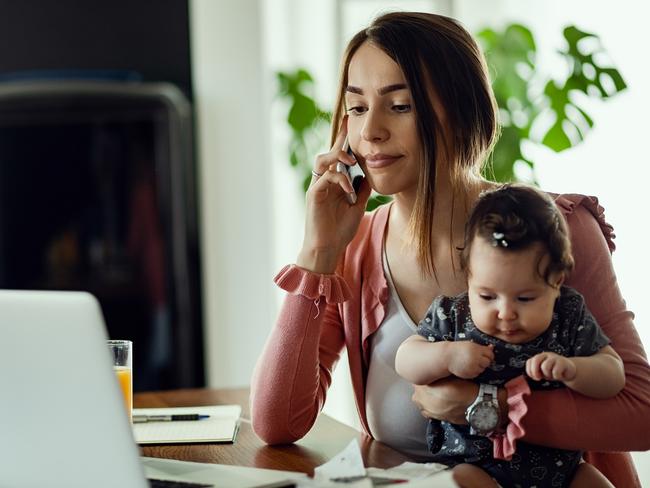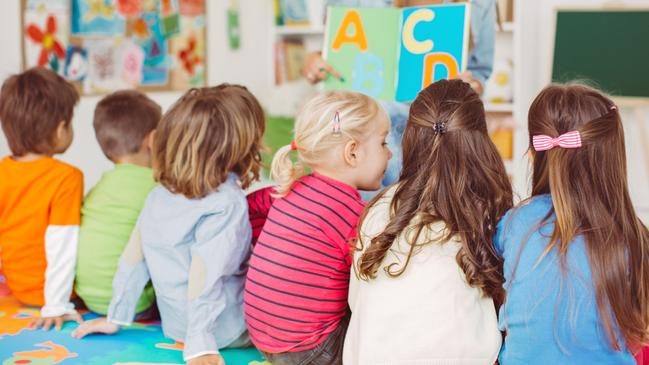Equal Pay Day: Wage crisis is catastrophic for Australian women
There’s one group of everyday Aussies that have been more economically smashed by COVID than others – and it’s about to hit breaking point.

Work
Don't miss out on the headlines from Work. Followed categories will be added to My News.
OPINION
Today is Equal Pay Day in Australia, but before you bust out the bright balloons, no, it’s not something worth celebrating.
That’s because today – August 28 – marks the 59 extra days from the end of the previous financial year that women have to work in order to earn the same men earnt that year.
According to the Workplace Gender Equality Agency (WGEA), that analyses Australian Bureau of Statistics (ABS) data, in 2020 our nation’s gender pay gap sits at 14 per cent for full-time employees.
If you’re wondering what this translates to in dollars and cents, women working full-time receive on average $253.60 less per week than their male counterparts. Yes, we’re $1014.40 out of pocket every single month for merely possessing two X chromosomes. I did warn you this wasn’t a celebration, didn’t I?
You might recall that 2019’s national gender pay gap was also 14 per cent, which may prompt some to believe that 2020’s stagnant result is neither cause for congratulations nor commiseration but you’d be entirely wrong. The current gender pay disparity, though it hasn’t increased year on year, will have a pernicious and catastrophic effect on Australian women and our financial security.
RELATED: Closing this gap could save the economy $1 trillion
RELATED: Chart Australia should be ashamed of

The 2008 global financial crisis saw the gender pay gap sit unmoved for an entire decade, so if it’s a harbinger of what’s to come, then we can expect women’s lives – and livelihoods – to be gravely impacted for years ahead.
Yes, the mud women have been wading through to reach gender equality has now morphed into perilous quicksand and Libby Lyons, director of the government’s WGEA, says it’s no time to be complacent.
“We cannot allow the COVID-19 crisis to lead to a decline in the many gains achieved in recent years, including the gradual drop in the gender pay gap,” Lyons tells news.com.au.
Zoom out to the wider picture and the gender pay gap is merely one setback in a maudlin series that has seen women hit the hardest during the coronavirus pandemic.
In fact, the latest Financy Women’s Index, which analyses a large range of data sets, discovered that for every month the pandemic affects our country, women lose one year in progress towards economic equality.
RELATED: Wife’s problem with husband’s salary

ABS data found that between mid-March and mid-April, 55 per cent of lost jobs were held by women and the official jobless figures discovered the amount of jobs plunged 8.1 per cent for women, versus 6.2 per cent for men.
While wading through the thick and treacherous bog of the pink recession, working Aussie mums face an additional hurdle, with some forced to leave jobs or reduce hours to care for children.
Due to exorbitant fees that are among the highest in the world, some families are forgoing childcare arrangements, making re-entry into the workforce particularly precarious for mothers. Yet despite the ABS finding that every $1 million spent on childcare creates approximately 9.2 jobs, our government is not rushing through a permanent more subsidised childcare scheme.
It’s an egregious oversight, according to executive director of advocacy group The Parenthood, Georgie Dent. “Childcare is the most efficacious investment that a government can make because of the benefits it delivers,” Dent tells news.com.au.
“The case was compelling even before COVID hit and as we seek to navigate high unemployment and a contracted economy it’s now even more urgent.”

So why is it that there’s been little to no enduring policies from our government that focus on women, who are so clearly positioned at rock bottom in the pandemic pecking order? Why do our country’s leaders stubbornly continue to overlook the half of our population suffering the most?
Sue Morphet, president of Chief Executive Women, says it’s crucial October’s budget includes female-centric policies if women are to be pulled out of this recession intact.
“Women form the majority of the workforce in industries that have been most impacted, such as retail and hospitality, and are overrepresented in informal and casualised work,” Morphet tells news.com.au.
“By embedding a gender lens in the budgetary process, governments can direct more coherent and strategic policy approaches that reduce gendered impacts of the crisis and build stronger foundations for recovery and growth.”
Surely we can all agree that now is not the time to neglect and undervalue the pivotal and crucial role of women – both in the home and the workplace. No, the 14 per cent gender pay gap isn’t something to shrug benignly at, rather, it’s a sign that the fight for gender equality in Australia is more necessary and more urgent than ever.
Edwina Carr Barraclough is a writer and editor, follow her on Instagram @edwinacarrbarraclough
Originally published as Equal Pay Day: Wage crisis is catastrophic for Australian women
